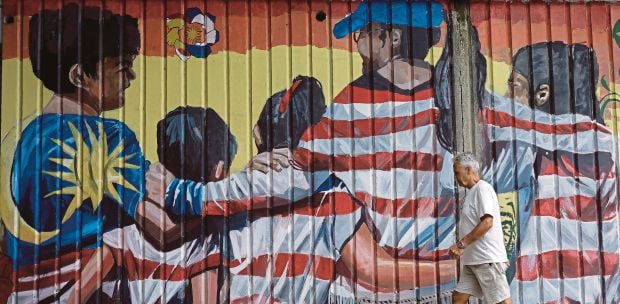A novelist once told me that we could go on and on about our differences. Our differences are less important than our similarities. People have a lot in common, but they refuse to acknowledge the similarities.
This can be said about the language that Indonesians and Malaysians speak with the exception that there are varieties of Malay dialects depending on the region in the Malay archipelago.
Both languages are a normative form of the Malay language, an Austronesian or Malayo-Polynesian language that had been used as a lingua franca for centuries, officially spoken in Malaysia, Indonesia, Brunei and Singapore.
In my travels to Mauritius, Madagascar and La Reunion in the Indian Ocean, I encountered a few Malay words spoken by the older generations such as "makan" (eat), "bunga" (flower) and "batik".
In fact, some diaspora Malays in Madagascar retained similar dishes like ours like "masak lemak pucuk ubi" or rivitoto, that is, crushed cassava leaves in coconut milk.
When I was working with Kompas at its headquarters in Palmerah Selatan, Jakarta, back in the 1980s, I had the opportunity to travel across Indonesia, from Jakarta to Irian Jaya.
I spoke Malay in the Malaysian accent to the people in the provinces and on islands. They were amused, but understood every word I said and vice versa.
Looking a little deeper, the Malay language shows the closest relationship to most of the other languages of Sumatra such as Minangkabau, Kerinchi, Mandailing, Rawa and Rejang.
It is not so closely related to other Austronesian languages of Sumatra, Borneo and Java, and to the Cham languages of Vietnam. Bahasa Melayu is spoken by more than 300 million people across the globe, including on Cocos Island in Australia.
Bahasa Melayu in Indonesia and Malaysia differs in terms of recognition. In Malaysia, it is the national language and is known as Bahasa Malaysia. In Indonesia, it is a regional language which is used in Malay-speaking areas such as in the east coast of Sumatra and West Kalimantan.
Bahasa Indonesia and Bahasa Melayu are similar and yet different due to the dialects and accents. But both are standard languages under the big umbrella of the Malay language.
Whether the Indonesians like it or not, the language is a deeply rooted Bahasa Melayu.
So when Indonesia's Education, Culture, Research and Technology Minister Nadiem Makarim rejected Malaysia's proposal to make Bahasa Melayu or the Malay language as Asean's "second language", I found it rather amusing.
Prime Minister Datuk Seri Ismail Sabri Yaakob had, on April 1, in a joint press conference with Indonesian President Joko Widodo, said Malaysia and Indonesia would continue efforts to uplift the status of Bahasa Melayu, which may become an Asean language one day.
Historically, Bahasa Indonesia became the official language of Indonesia following a declaration known as Sumpah Pemuda in 1928 with the purpose of forging a national identity. Before the declaration, it was known as Bahasa Melajoe.
Moreover, Bahasa Melayu is an Islamic language. It has been used to teach, clarify and communicate Islam across the Malay archipelago since the 1300s and was the business language during the Malacca sultanate when Melaka was an international port of call.
Today, it is an academic language used to teach Islamic Revealed Knowledge at the university level in Malaysia, Indonesia and Brunei.
In the 16th century, religious books or "kitab" were written in Malay.
The Malay language was used to explain the basic teachings of Islam to new converts in the archipelago.
Ulama from various parts of the archipelago embarked on a project to write and translate religious books in the Jawi script.
One of the most prolific writers of the 17th century was Nuruddin al-Raniri. In addition to 23 books on aspects of religious knowledge, Nuruddin, in 1644, wrote the famous "kitab", as-Sirat al-Mustaqim (The Straight Path), which was in Bahasa Melayu in the Jawi script.
Since the 13th century, Bahasa Melayu has been used as a medium of instruction in Islamic learning centres across the Malay archipelago, including in Samudera-Pasai (1280 to 1400), Melaka (1400-1511), Acheh (1511-1650), Johor-Riau (1650-1800) and Patani-Narathiwat (1800-1900).
Malaysians and Indonesians have their roots in Bahasa Melayu and things are not going to change in the next century except that the language will absorb new words to add to its vocabulary.
The writer, a former NST journalist, is a film scriptwriter whose penchant is finding new food haunts
The views expressed in this article are the author's own and do not necessarily reflect those of the New Straits Times






